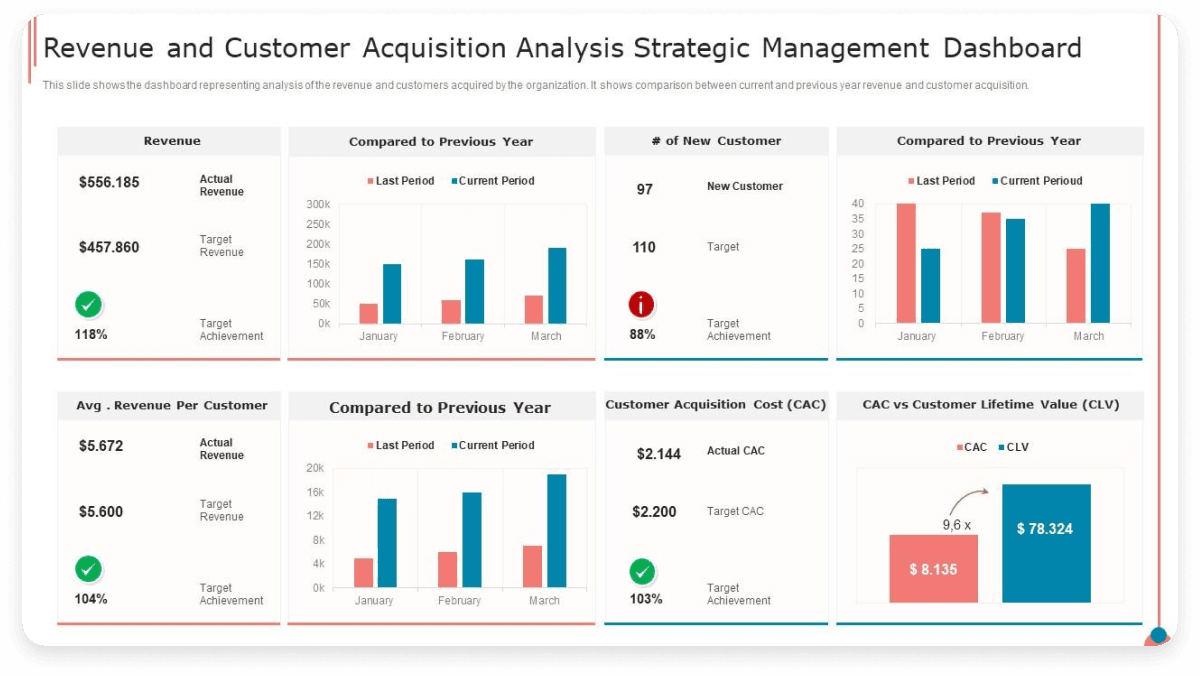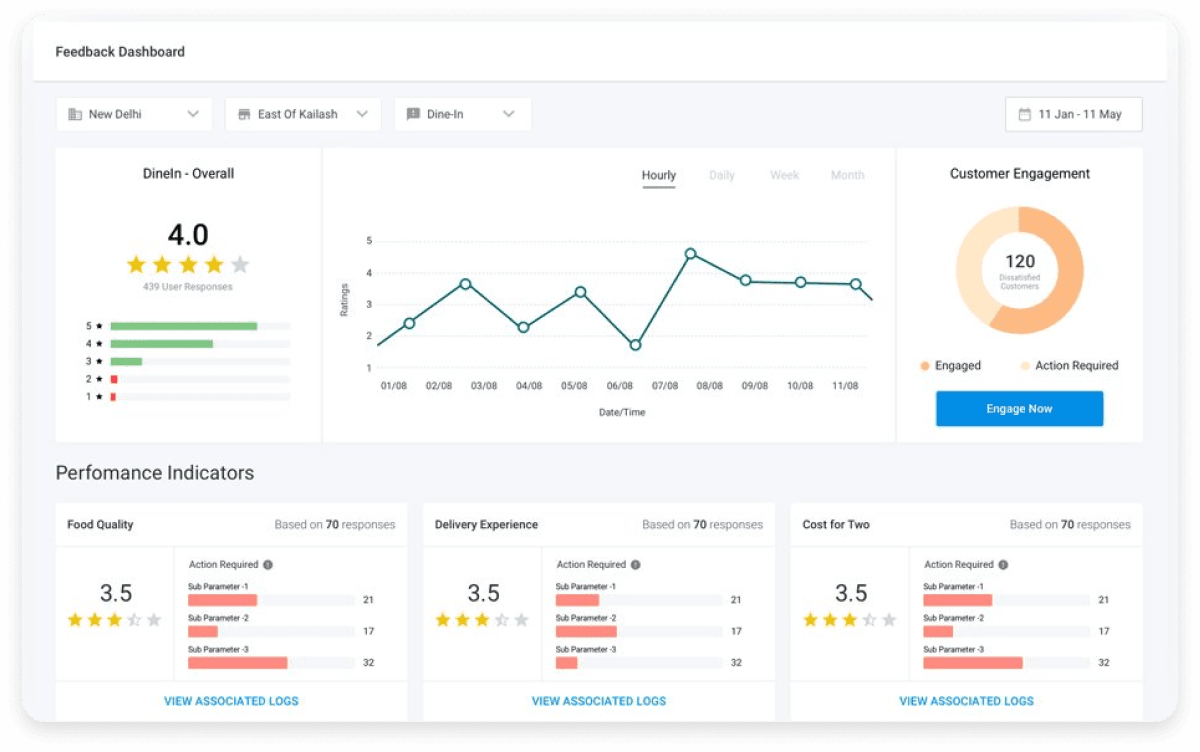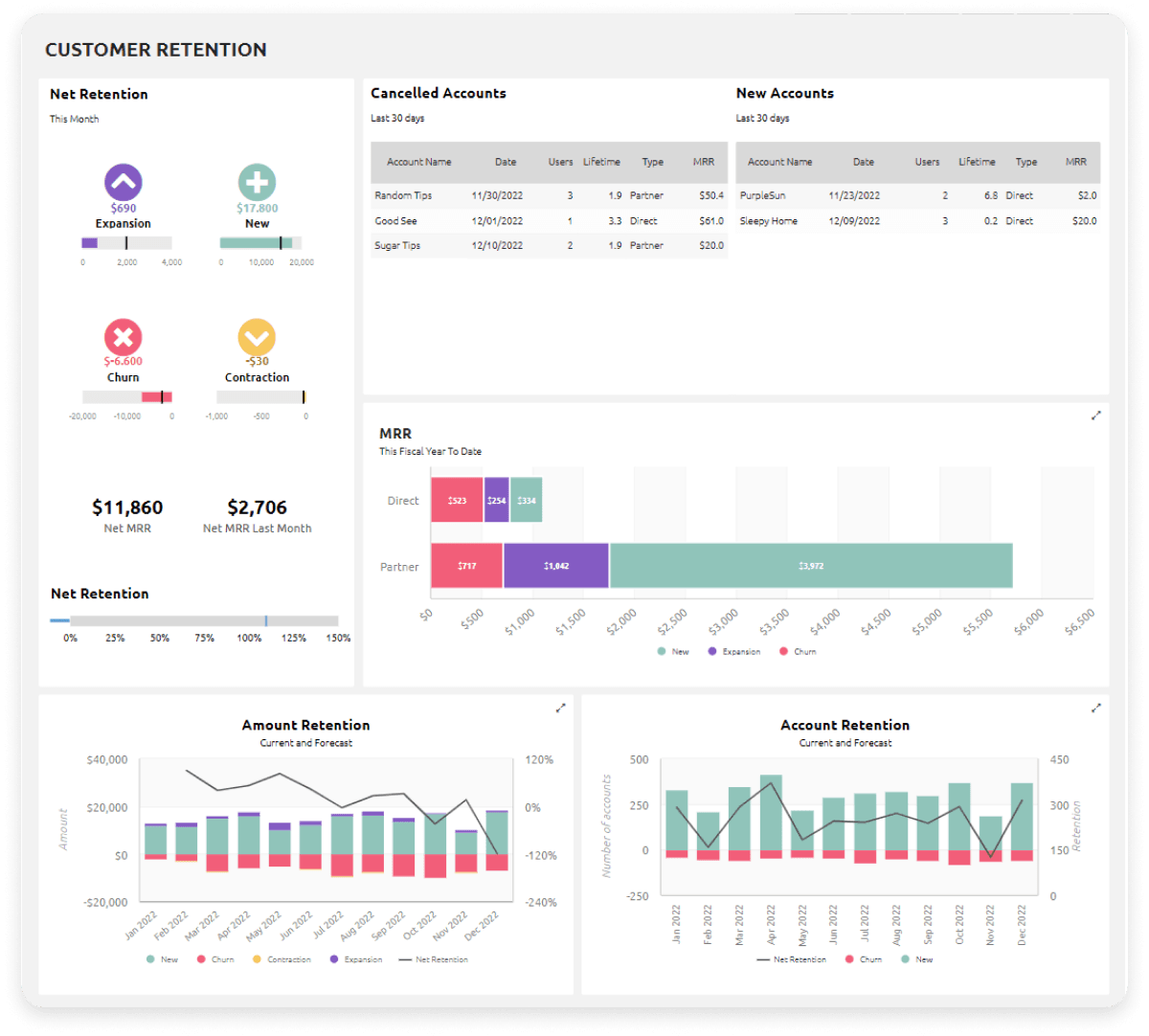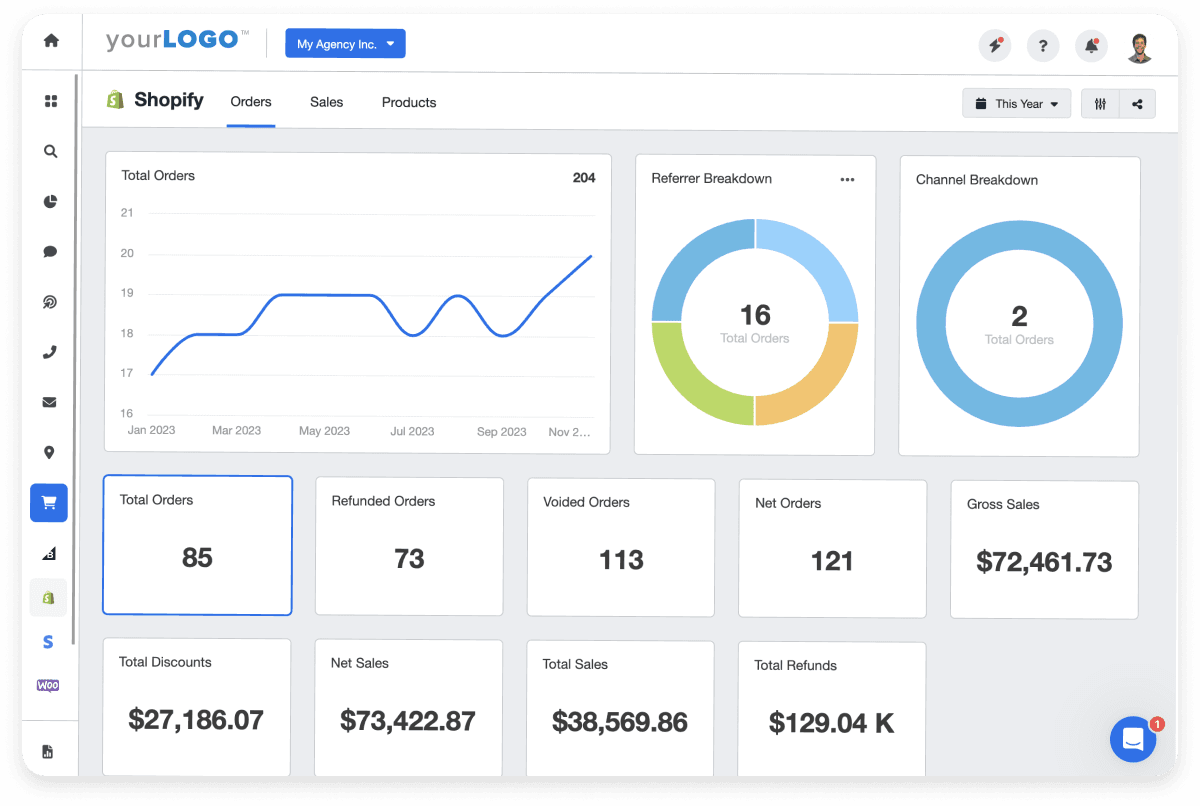What do you mean by customer analytics?
Customer analytics involves gathering and analyzing data from different customer interactions across multiple channels. It helps better understand customer preferences, customer behavior, and trends. This also allows companies to make data-driven and well-informed business decisions.
Customer analytics forms effective strategies, improves products, and offers a better experience. Essential steps in customer analytics include data collection, segmenting, data visualization, and modeling.
Importance of customer analytics
Now that you understand the basics of customer analytics, let us understand how it can help your ecommerce business grow and evolve.
- Shaping communications to meet customer goals: By understanding old and new customer preferences and behaviors, your business can tailor its messaging and communication strategies to better align with your customers' wants and needs.
- Targeting and segmentation for higher ROI: Customer analytics allows your ecommerce business to identify specific groups within its audience and segment them. This also helps you to target your marketing campaigns more effectively to specific groups and increase return on investment.
- Optimal marketing channel selection: Analyzing your customer data helps your ecommerce store determine the most effective marketing channels. This ensures that you invest in the channels that yield the best results and where your target audience is.
- Product or service improvement: Insights gained from customer analytics can highlight areas where your products or services can be improved to better meet customer demands and expectations.
- Improving customer loyalty: By consistently meeting your customers' needs and preferences, you can build stronger relationships, foster loyalty, and encourage repeat business.
Categories of customer analytics
Customer analytics can be broadly categorized into four different types based on the kind of analysis done and the goal of the analysis. Let’s take a look at them one by one.

1. Descriptive analytics
Descriptive analytics takes a lot of time and might not always seem valuable initially, but it's good for spotting trends in specific customer groups. It helps you look back at what has happened and see patterns that could lead to more discoveries.
2. Diagnostic customer analytics
This type of analytics analyzes data and uses data mining techniques to understand why things are happening the way they are. By examining the information inside your company and what you know about customers from the outside, you can identify issues and find solutions.
3. Predictive customer analytics
Predictive analytics uses data points and tools like regression analysis, Artificial Intelligence (AI), and Machine Learning (ML) to guess or predict what might happen next. This can help you focus on the right customers and keep them interested, turning your knowledge into insights that help you make better business decisions.
4. Prescriptive analytics
Prescriptive analytics is all about answering specific questions. Looking at different possibilities and using the data to guide decisions helps you choose the best path forward, whether taking advantage of an opportunity or avoiding a problem. It even gives illustrates the consequences of each choice. It's a smart way to make informed choices about the future.
Types of customer analytics
Now that we understand the importance of customer analytics and the broad categories it’s divided into, let us dive deep into its types and their use cases.
1. Customer acquisition analytics
Customer acquisition analytics help you see how well your strategies work, such as how much you spend per lead or which ads bring in the best prospects.
Merging customer acquisition analytics with insights from how customers interact with your offerings can help you change your approach for better personalization.
 A tech company, for example, could analyze which online ad platforms yield the highest-quality leads and streamline its ad spending.
A tech company, for example, could analyze which online ad platforms yield the highest-quality leads and streamline its ad spending.
2. Customer engagement analytics
A huge number of customers interact with brands in many ways, such as using products, scrolling through social media, clicking ads, etc. Customer engagement analytics allow you to analyze these interactions to get a real sense of what’s working and what’s not.
Customer engagement analytics provide valuable feedback for marketing, product development, and customer service teams, allowing them to refine everything from promotions to product features.
A mobile app developer, for instance, might use customer engagement analytics to see which app features are most used and loved by users and double down on those features.

3. Customer experience analytics
Insights on how your customer feels about your brand, products, and services fall under customer experience analytics.
It helps you understand and improve the user experience for your customers. This helps increase customer retention, customer satisfaction, customer lifetime value and reduce churn rate. You can use CSAT, NPS or CES survey to collect the customer feedback for analysis.
A restaurant chain, for instance, could track customer feedback to gauge customer satisfaction with the service and food they’re receiving.

💡Related guide: How to Get Valuable Insights from a Customer Satisfaction Survey
4. Customer retention analytics
 Customer retention analytics help you monitor how long people stay with you or are loyal to your brand and analyze why they might leave.
Customer retention analytics help you monitor how long people stay with you or are loyal to your brand and analyze why they might leave.
Knowing the problems with your products and services that might be causing your customers to churn lets you quickly fix issues. You can also consider ways to keep your customers happy and loyal, like introducing new loyalty programs or adjusting prices.
An internet service provider, for instance, could analyze retention to understand why a lot of customers switch to competitors—perhaps due to pricing or service issues.
5. Customer lifetime value analytics
Some customers might buy just once from your ecommerce store, and others might return repeatedly. Understanding who spends what and how often falls under customer lifetime value analytics.
The insights from customer lifetime value analytics help you focus your marketing and retention efforts on the right customers, making your budget work smarter and boosting your profits.
A subscription-based streaming service, for instance, might use customer lifetime value analytics to identify users who are likely to subscribe year after year and focus retention efforts on them.

Every business has an ICP, and defining one for your business is crucial. These are the kinds of people that you’ve identified as your ideal customers. This is how you can perform an ideal customer profile analysis.
- Who they are: Start with the basics like age, gender, where they live, and maybe their income or education level. This helps you understand who's interested in what you're selling.
- What they're like: This is about getting into your customers' heads. What do they care about? Are they into eco-friendly products? Do they value high-quality goods over cheap deals? This helps you tailor your marketing to hit the right notes.
- How they shop: Look at how often they buy things, how much they spend, and what products they usually pick up. Some people might come around only when there’s a sale, while others might consistently buy new arrivals.
- Their needs and problems: Figure out why they're coming to you. Do they need something hard to find elsewhere? Are they looking for fast delivery because they’re always last-minute? Knowing this lets you ensure your store answers these needs better than anyone else.
- Their shopping journey: Think about the steps they take from the moment they find your store to making a purchase and even after that. This helps in smoothing out any bumps in their shopping experience and making sure they leave happy—and come back.
💡Related guide: How to Build Customer Journey Maps for Your Buyer Personas
Steps to run an effective customer analysis
Running an effective customer analysis involves several structured steps that can be adapted to suit different types of analytics, whether you’re focusing on acquisition, engagement, satisfaction, churn, or lifetime value. Here’s a step-by-step guide to help you get started:
1. Define your analytical goals
Start by clearly defining what you want to achieve with your customer data analysis. Are you trying to understand why customers are leaving, or perhaps you want to see which marketing channels bring in the most valuable customers? A clear goal helps you focus your efforts and choose the right tools and methods for your analysis.
2. Collect relevant data
Gather data that is relevant to your goals. This might include transaction histories, customer service interactions, social media activity, and ad responses. Ensure you’re pulling from all the relevant sources to get a comprehensive view of your customer interactions. The more data you can gather, your insights will be more accurate.
3. Clean and prepare your data
Data cleaning is crucial for accurate analysis. This next step involves removing errors, filling in missing values, and ensuring consistency across datasets. It’s time-consuming but essential for ensuring that the insights you generate are based on the right data.
Depending on your goals, select the analytical tools and techniques that best fit your needs. For instance, you might use statistical software for regression analysis if you’re doing predictive analytics or AI-driven tools for pattern recognition in engagement data. Choosing the right tools will help you make the most of your data.
5. Analyze the data to discover insights
This is where you apply your chosen methods to the prepared data to uncover patterns and insights. For example, you might discover that certain app features are particularly popular or identify why customers churn. The analysis should align closely with your initial goals and provide clear answers or insights.
6. Interpret and report findings
Turn your data insights into understandable results. This might involve creating dashboards, detailed reports, or presentations clearly articulating your findings. Make sure to highlight how these findings relate to your initial goals and what they mean for the business.
7. Implement actionable strategies
Based on your findings, develop strategies that impact your business positively. For instance, if your customer retention analysis shows a common point at which customers leave, develop targeted interventions at that stage. Implementing actionable strategies is about turning insights into real-world outcomes.
8. Monitor results and iterate
After implementing changes, monitor key metrics to see your interventions' effectiveness. Analytics is an ongoing process, and continual monitoring helps you refine your strategies and make adjustments as necessary. This step ensures that your business remains agile and responsive to customer needs.
Conclusion
By leveraging customer segmentation, feedback loops, and analytics, you uncover invaluable insights that shape your strategies and propel your ecommerce store toward success. We trust you'll find this guide invaluable. Understanding your customer’s quirks and preferences allows you to craft messages and experiences that truly resonate with your target audience. Additionally, customer analytics will allow you to pinpoint where to focus your marketing efforts and fine-tune your product offerings, ensuring customers keep returning for more.



 A tech company, for example, could analyze which online ad platforms yield the highest-quality leads and streamline its ad spending.
A tech company, for example, could analyze which online ad platforms yield the highest-quality leads and streamline its ad spending.

 Customer retention analytics help you monitor how long people stay with you or are loyal to your brand and analyze why they might leave.
Customer retention analytics help you monitor how long people stay with you or are loyal to your brand and analyze why they might leave.







